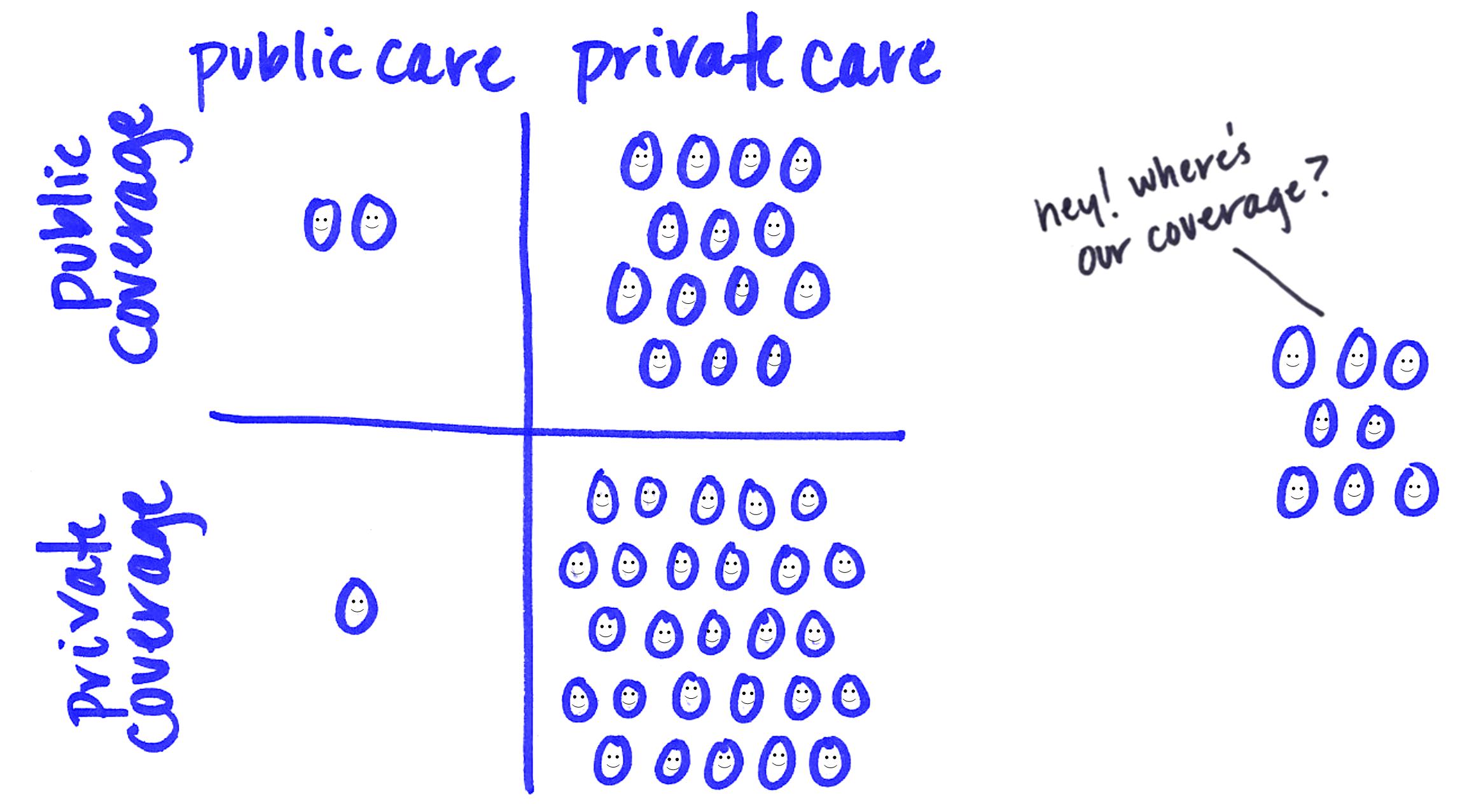
This post was written by Sarah McAfee, a former member of our team.
During lunch at a large conference last week, I was seated next to a Canadian who also worked in health care. She introduced herself and said, “So…how does the US health care system work, anyway?”
So much for small talk.
“Well,” I said, “It works—or doesn’t work—a little differently for everyone.”
“As you know, every health care system has two major parts—coverage and care. Coverage does you no good if care isn’t accessible; care is prohibitively expensive without coverage.”
“In the US system, how our coverage and care are paid for divides us into groups.”
THE INSURED*
THE UNINSURED*




"Of course, that leaves out over 16% of the US population: the uninsured. These folks have a whole system of their own—you might call it pay-as-you-go—and it's the most expensive system there is. Patients paying their own way through the health care system pay 60%-90% more for the same care that insurers are paying for, because insurers can negotiate the rates down to a much lower level."
THE INSURED
THE UNINSURED
“While the US is known for having some of the best health care in the world, having five different systems at work has led to unsustainable cost growth and a gap in care between the wealthy and poor.”
My new friend sat there for a moment considering my explanation, and then said, “How did you end up with such a complicated system?”
But at that point, the speaker took the stage and the lights dimmed. Phew!
*Population ratios are approximate, based on 2010 US Census numbers.







